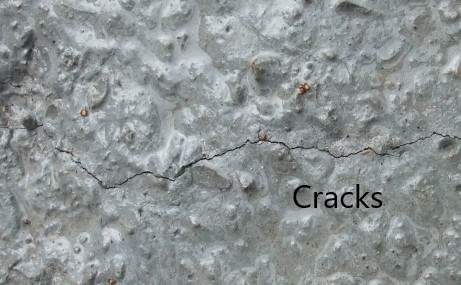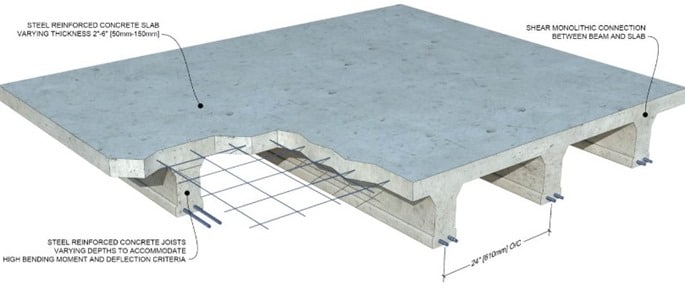According to Eurocode 2, corrosion protection depends on the nominal cover to reinforcement and the cracking of concrete.
Further, the density of concrete, water/cement ratio, strength class, etc. can be considered as some of the other factors connected with the durability of the concrete. Environmental conditions are the starting factor considered in selecting the nominal cover to the reinforcements.
Exposure classes related to the environmental conditions are grouped under six main categories in the Eurocode 2. They are as follows.
- No risk of corrosion or attack
- Corrosion induced by carbonation
- Corrosion induced by chlorides
- Corrosion induced by chlorides from seawater
- Freeze/Thaw Attack
- Chemical Attack
There are subcategories under each main category depending on the changes in the environment. There are separate articles on this website that discussed the carbonation, corrosion by chlorides, chemical attacks, and Free/Thaw attacks. The following table taken from Eurodoe 2 indicates the all the exposure classes need to consider in selecting the cover to the reinforcement.


There are two main components to be calculated to find the nominal cover to reinforcements.
Cnom = Cmin + ΔCdev
Where
Cmin – a minimum concrete cover which shall be calculated based on three main factors.
- Minimum cover requirement with the bonding of reinforcements
- Minimum cover requirement with durability for reinforcements
ΔCdev – Allowance for design deviations
Minimum Cover Requirement with the Bonding of Reinforcements
The minimum cover in relation to boning stress of the reinforcement can be obtained from Table 4.2 of EN 1992-1-1:2004. It is suggested to provide at least one bar diameter for a single bar and equivalent bar diameter for bundle bars. For further information, Eurocode 2 could be referred.
Minimum Cover Requirement with Durability of Reinforcements
Firstly it is required to classify the structures based on the environmental conditions, structural class, construction aspects, etc as the cover to the reinforcement in relation to the durability is obtained based on the class of the structure. Eurocode provides a guideline to select a structural class that needs to be considered when obtaining the cover to reinforcement. It suggests to increase/reduce the class of the structure based on the different serviceability aspects mention in the following table.

After selecting the structural class to be considered in the particular case and based on the exposure class that the structure is exposed, minimum cover to the reinforcement can be obtained from the following table give in the Eurocode 2. Classification of the structures is discussed in a different article “Structural Class as per Eurocode” published in this site.

The minimum rebar cover based on the durability requirements can be obtained following the above table. Cover to the reinforcements is based on the type of structure and its durability.
In addition, there are other factors such as fire resistance that considered in evaluating the cover to the reinforcements. Use of the different materials and requirements of additional protections, etc also considered determining the required cover. The following equation is stipulated in the EC2 to calculate the cover to the reinforcements.
Cmin = Max{ Cmin,b ; Cmin, dur + ΔCdur, γ – ΔCdur,st – ΔCdur, add ; 10}
Allowance of Desing Deviations
The deviation of the rebar cover could be negative or positive. However, the nominal cover to reinforcement shall be increased by the absolute value of the deviation. Changes in the cover during the construction, for example, cover to the reinforcements at uneven surfaces, could be required to have some tolerance for the deviations.
By considering all the above facts, the nominal cover to reinforcement can be calculated. There are other factors affecting the durability of the concrete which will be discussed in a different article.


